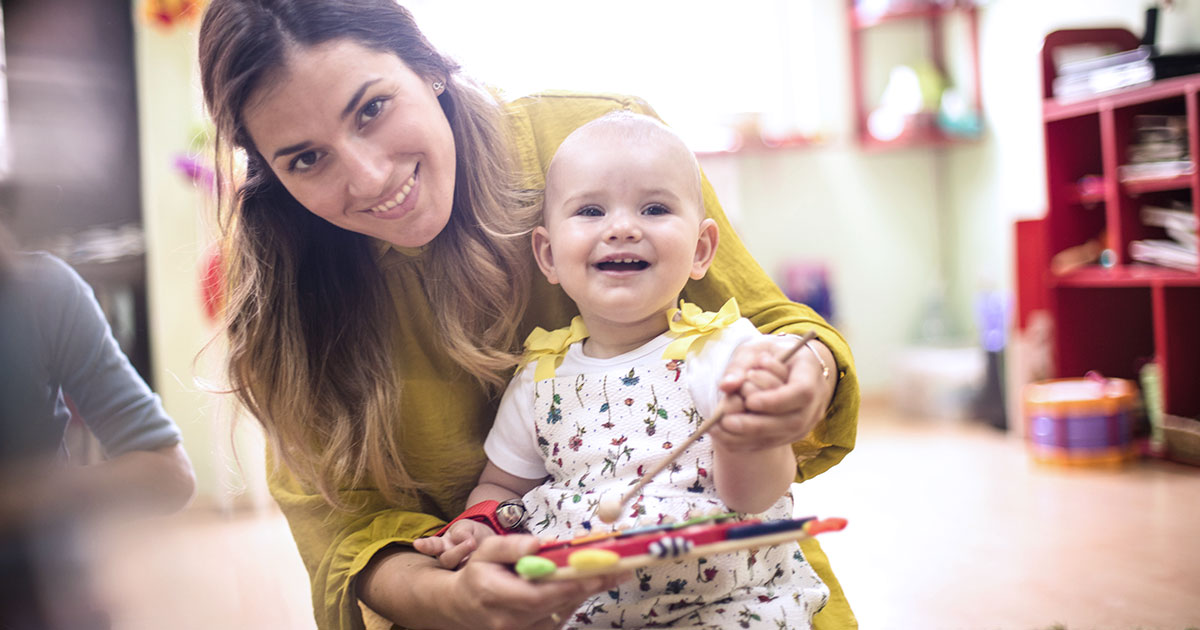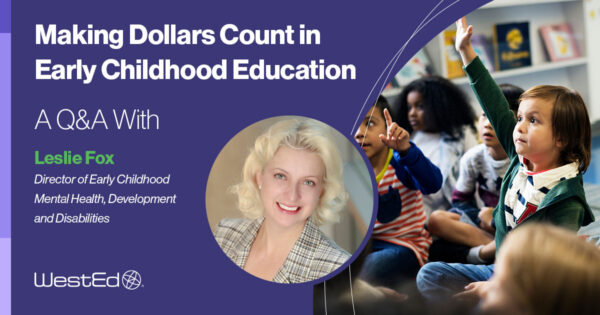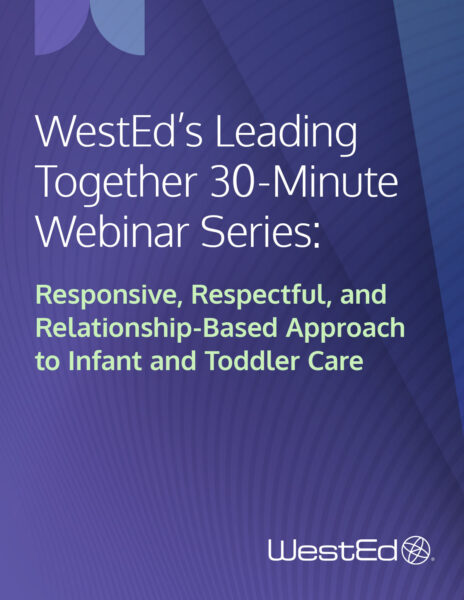
September 15, 2025
WestEd’s recent Leading Together webinar explored how relationship-based care supports optimal development in infants and toddlers.
Led by WestEd’s Peter Mangione and Amber Morabito and moderated by Arlene Paxton and Elizabeth Crocker, the session emphasized that responsive, respectful caregiving fosters secure attachments, supports learning, and strengthens family partnerships, no matter the care setting.
Understanding Responsive, Relationship-Based Care
Infants and toddlers thrive when their environments include predictable, secure, and caring relationships. Children’s core needs remain consistent regardless of where care occurs, whether with a relative, in family childcare, or at a center. These needs include close, consistent relationships with caregivers who respect and respond to their verbal and nonverbal cues.
One key practice is treating caregiving routines as opportunities to build connection and trust. For example, a caregiver might say, “I’m going to wipe your nose,” before doing so, or they might narrate a diaper change to promote respectful interaction. When children and their families feel seen, known, and valued, they are more likely to feel safe, engaged, and ready to learn.
The Power of Responsiveness
Expanding on the concept of responsiveness, the webinar highlighted that it’s not about instant reaction, but rather a timely, attuned rhythm between caregiver and child. Effective caregivers observe each child’s temperament and signals, listen closely, and respond in ways that affirm the child’s needs and emotions.
Mangione described responsive care as being present in the moment, allowing the child to take the lead in signaling when interaction is wanted—or when independent play is preferred. Over time, these rhythms become deeply familiar, forming the foundation for trust and emotional security.
To help caregivers strengthen their responsiveness, the Program for Infant and Toddler Care (PITC) recommends a three-step process:
- Watch—Observe the child’s behavior and cues closely.
- Ask—Reflect on what the child might be communicating, and express interest both verbally and nonverbally.
- Adapt—Respond in a way that supports the child’s needs and remain flexible to adjust if the first response doesn’t match.
This responsive cycle is continuous and grounded in being present, curious, and intentional.
Supporting All Care Settings Through Relationships
Strong, responsive relationships are possible—and essential—across all care settings. While the specific strategies may vary, the focus on individualized care, primary caregiving, and continuity of care remains key. Even in large group environments, systems and routines can be structured to ensure that each child and family is known and supported.
When caregivers respond with warmth and respect, children develop a sense of belonging and security, which lays the foundation for exploration and learning. These benefits are mirrored in family relationships as well. Responsive care builds trust between caregivers and families, supporting a shared commitment to the child’s well-being.
Environmental factors also matter. Simple practices such as greeting families by name, learning about home routines, and individualizing care routines create a sense of community and support stronger caregiver–child bonds.
Caregivers who provide nurturing, attuned, and consistent care are shaping a foundation that supports children’s development in the moment—and well into the future.
Watch the full webinar and view the other webinars in the series.
How We Help
Learn more about WestEd’s Program for Infant and Toddler Care.










